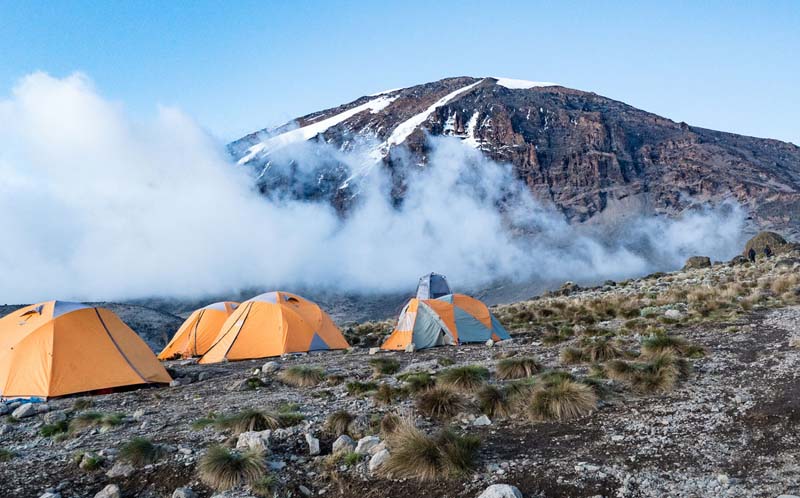Mount Usambara
Mount Usambara: A Hidden Gem of Tanzania’s Eastern Highlands
While Mount Kilimanjaro is widely recognized as the tallest peak in Africa, the Usambara Mountains offer their own unique charm and allure, though less known to the wider world. Situated in the northeastern part of Tanzania, these mountains are part of the Eastern Arc Mountain range, offering lush forests, scenic valleys, and captivating wildlife. Unlike Kilimanjaro, which draws climbers from across the globe, the Usambara Mountains are a haven for trekkers, nature lovers, and those seeking tranquility in a pristine environment.
The Usambara Mountains are renowned for their rich biodiversity, including rare plant and animal species, many of which are endemic to the region. With routes that weave through cloud forests, tea plantations, and picturesque villages, this area provides an ideal setting for those interested in experiencing nature up close. The region is also home to several conservation areas, such as the Amani Nature Reserve and Shagayu Forest Reserve, known for their lush greenery and diverse ecosystems.
Trekking in the Usambara Mountains offers a different type of adventure compared to the high-altitude climb of Mount Kilimanjaro. The trails are less challenging, making it suitable for a wider range of travelers, and visitors can enjoy more intimate encounters with the local culture. Whether you’re exploring the trails to Mambo Viewpoint or hiking through the serene landscapes of Lushoto to Mtae, the Usambara Mountains provide an enriching and tranquil experience that contrasts with the more rugged and popular trekking routes of Kilimanjaro.
Mount Usambara Frequently Asked Questions (FAQs)
What is Mount Usambara?
Mount Usambara is a range of mountains located in northeastern Tanzania, known for their lush forests, stunning biodiversity, and picturesque landscapes. The range is part of the Eastern Arc Mountains, and it’s not a single peak but a collection of ridges and valleys offering various trekking opportunities.
What is the best time to trek in the Usambara Mountains?
The best time to visit the Usambara Mountains for trekking is during the dry season, which runs from June to October. The weather is cooler and more pleasant for hiking during this time. However, trekking can also be done in the rainy season (from March to May), though trails may be muddy and slippery.
Is trekking in the Usambara Mountains difficult?
The difficulty of trekking in the Usambara Mountains varies depending on the route you choose. Most trails are considered moderate and suitable for trekkers of all fitness levels. However, some routes, such as the trek to Mtae, can be more challenging due to steep climbs and rugged terrain.
Do I need a guide for trekking in the Usambara Mountains?
Yes, it is highly recommended to trek with a local guide when exploring the Usambara Mountains. A guide will help navigate the trails, provide insight into the area’s flora, fauna, and culture, and ensure your safety.
What wildlife can I see in the Usambara Mountains?
The Usambara Mountains are home to a wide variety of wildlife, including several endemic species of plants and animals. Common sightings include birds like the Usambara Eagle Owl, butterflies, monkeys, and various forest animals. The Amani Nature Reserve, in particular, is known for its rich biodiversity.
Can I camp in the Usambara Mountains?
Yes, camping is possible along some trekking routes, especially in areas like Lake Natron or near Mambo Viewpoint. However, most trekkers stay in local guesthouses or lodges in places like Lushoto or Mtae, where there are more established accommodations.
How long do trekking routes in the Usambara Mountains take?
Trekking routes in the Usambara Mountains vary in length, with some taking just a few hours (such as the trek to Mambo Viewpoint), while others may take several days. For example, the Lushoto to Mtae trek can take around 2–3 days, depending on the pace and the specific trail.
Are there any cultural experiences along the Usambara trekking routes?
Yes, many of the trekking routes pass through local villages where you can experience the culture and traditions of the indigenous Shambaa people. You’ll have the opportunity to visit traditional homesteads, interact with local communities, and learn about their ways of life.
Let's start Planning!
Ready for Your Adventure?
Absolutely! Are you ready to embark on the adventure of a lifetime? Whether it’s witnessing the Serengeti Wildebeest Migration, conquering Mount Kilimanjaro, or exploring the wild beauty of Tanzania, Tanzania Migration Safari is here to make it happen.
Let’s start planning your dream safari and trekking experience today! 🚀🌍🐘
Where would you like to begin your journey? 😊


